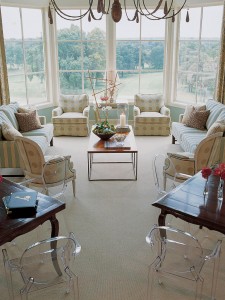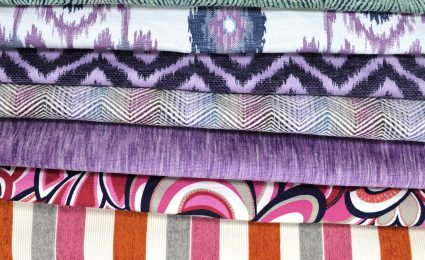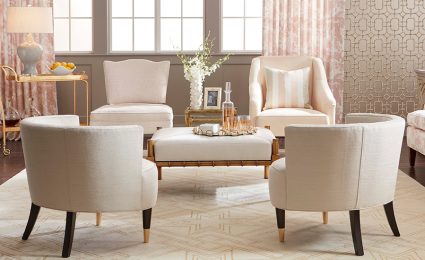When it comes to choosing fabrics for your curtains, it may entail quite a lot of thinking, such as deciding on the choice of fabrics. When you choose the fabrics, consider its durability, light exposing/blocking qualities, texture and weight.
If you spend enough time considering your options before heading down to an actual store, you will acquire a clearer picture of what will work best for your home.
The Basics: Width. Weave, Thread Count and Durability
When we talk about fabric width, there are two basic ranges to take note of: 42-45 inches and 54-60 inches. It is pertinent that you check the fabric’s tag or bolt label to determine its width. Keep in mind not to mix fabrics used for clothing into the picture because home-decorating fabrics are in the wider width. In fact, there are some decorating fabrics out there that are 72-110 inches or wider!
Common weaves used for decorator fabrics include damask, satin, twill and plain. Also, most printed cottons are twill weave or plain. For example, a damask weave is a patterned weave that is single-colored, and a satin weave can be used to create stripes in some fabrics.
Decorative curtain fabrics tend to have a higher thread count than those that are used to manufacture clothes. With a higher thread count, decorator fabrics can last a longer time. You should note that some fabrics with a certain number of thread counts can only be dry-cleaned, thus you should check the fabric bolt tag for further cleaning instructions.
Fabrics that are exposed to the sun can become damaged over time. Silk, in particular, are prone to sun rot. Hence, you should opt for window treatment fabrics that are least prone to sun rot. For example, cotton canvas, brocades or chintzes.
Common Window Treatment Situations You Should Know
 Still not sure what kind of fabrics you should opt for? Here are a few more recommendations (situational) to help you pick the right one:
Still not sure what kind of fabrics you should opt for? Here are a few more recommendations (situational) to help you pick the right one:
- You need natural light in your bathroom and the window still needs privacy
Fabrics that can give a bit of coverage and let light in include heavier plissé or voile. As plissé fabric do come in patterns and solids, consider creating a basic curtain panel with this fabric. This should do the trick!
- The only source of light in a small kitchen is a small window
If you have a small window in a small window, you should maximize the window as much as possible. For starters, consider adding a simple valance. If you need privacy in the evenings and nights, consider adding a custom roll-down shade – one that can also be mounted out of sight under the valance during daytime.
- You have a small room with drafty windows
Fix this problem by adding a drapery that can cover the window entirely. Next, opt for a heavier fabric like damask. Be sure to also match the fabric’s color with your room’s paint color. This solution will help block unwanted cold air and even create a room-enlarging illusion.


 Still not sure what kind of fabrics you should opt for? Here are a few more recommendations (situational) to help you pick the right one:
Still not sure what kind of fabrics you should opt for? Here are a few more recommendations (situational) to help you pick the right one:
